“Grief has limits, whereas apprehension has none. For we grieve only for what we know has happened, but we fear all that possibly may happen.” Pliny the Elder, philopher

Ciao Italy! We sailed into Naples late morning after cruising by the resort isles of Ischia and Capri, the playground of the Jet Set. A combination of clear skies with threatening deep dark clouds would later prove ideal for outstanding pictures. Mount Vesuvius loomed large and commanding over the bay. Excitement was building as we headed to Pompeii.
Our guide, Francesca, mentioned how the previous days it had rained relentlessly. We all did a Hail Mary in gratitude for the break in the weather. What struck me immediately as we left the port were all the hanging clothing lines, overflowing with items of all sizes and colors and hanging several stories high, fluttering in the wind and creating an artistic, surreal urban landscape. Naples is astoundingly beautiful and demands a much longer visit.
The tour made its first stop at the dreaded demonstration/gift shop … these being cameos. I took the time to admire all the beautifully intricate pieces, some museum quality, as the rest of the bus travelers were busy ringing up at the cash register.
Pompeii … the ancient seaside Roman city sits under the ominous shadow of the active Vesuvius. It erupted in 79 AD and buried the city along with Herculaneum and other surrounding towns under 13-20 feet of volcanic ash and pumice. After several studies it was confirmed that the majority of the victims died immediately from ash suffocation.
Pliny the Younger famously provided a first-hand account of the eruption of Mount Vesuvius from his position across the Bay of Naples at Misenum, but written 25 years after the event. His uncle, Pliny the Elder, with whom he had a close relationship, died while attempting to rescue stranded victims.
The city was largely preserved under the ash and offers an extraordinary snapshot of daily life of its Roman inhabitants. It was a wealthy town populated with secondary country homes of the Roman elite rather like a Palm Springs by the sea. By the way, Pompeii no longer sits seaside as the ash and lava formed land and pushed it quite a bit inland.
The first excavations began in 1746 under Charles de Bourbon who later became king of Spain and unearthed human bodies and animals among many other organic objects. The bodies were entombed in the ash and having decayed, left voids which archaeologists found could be used as molds. Plaster casts were made of these unique and often gruesome figures in their final moments of life. I‘ve seen samples in previous museums and most recently at the Reagan Library, but seeing them in their original locations only bring to minds the pain and horrors of the last minutes of life.
Walking through Pompeii’s well planned streets, our guide pointed out the tracks of the chariots imprinted on its cobblestone streets. All along we’d view fascinating remains of old villas with mosaic floors, numerous graffiti-carved buildings, the ornate, frescoed public bath and massage rooms (David imagined himself working here) … temples, public fountains, amphitheaters. Francesca pointed out the phallic symbols on the wall leading to a house of pleasure; frescos inside still depict certain positions. (A side note here … the treacherous cobblestone streets of Ajijic shows that not much progress in road work improved much in 1,500 years.)
We came across the market streets where one could imagine the hustle and bustle of vendors hawking vegetables, fruits, fish, meat, household wares and the pizza guy ~ hey, it’s Naples … there’s got to be a lot of pizza guys … except my imagination got the best of me as it will take tomatoes another 500 years for them to be introduced to the old world.
The sad thing I learned is that Pompeii has been subject to both natural and man-made forces, which have rapidly increased deterioration. Weathering, erosion, light exposure, water damage, poor methods of excavation and reconstruction, introduced plants and animals, tourism, vandalism and theft have all damaged the site in some way. Two-thirds of the city has been excavated, but the remnants of the city are rapidly deteriorating.
On the Menu … Mangia mia Margarita Pizza, whole bubbly oven fresh pizza pie (so named after Italy’s last queen)…woulda, coulda, shoulda ordered two as it was devoured in a flash. Tonight we ate at the last of our specialty restaurants, Le Bistro (French), and the food was good: Loupe de Mare, Crevettes (shrimp) in a light buttery cream sauce, escargots, asparagus duck salad and to top it all off an overdose of profiteroles.

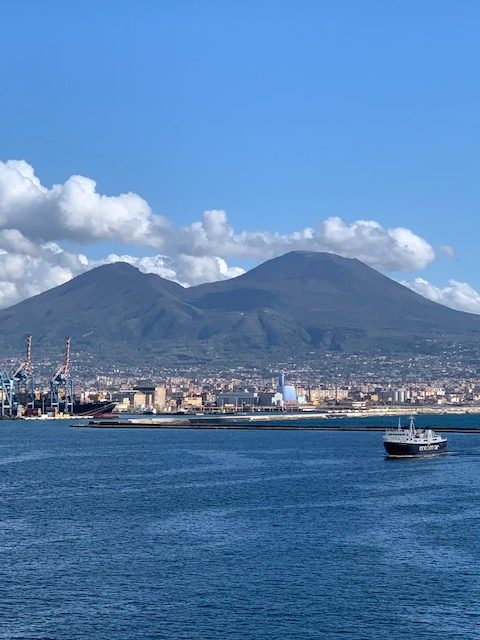
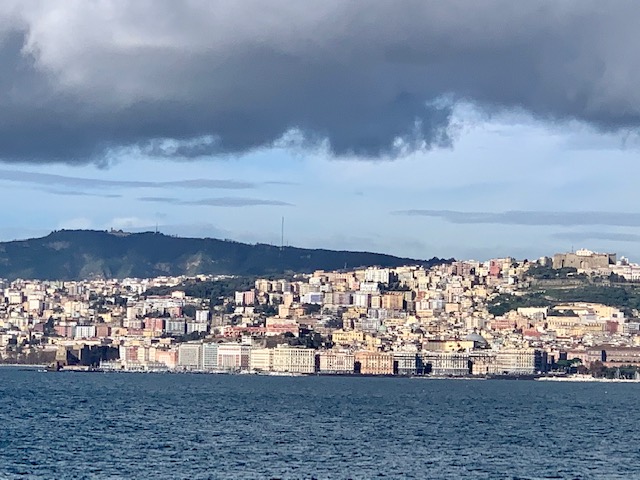




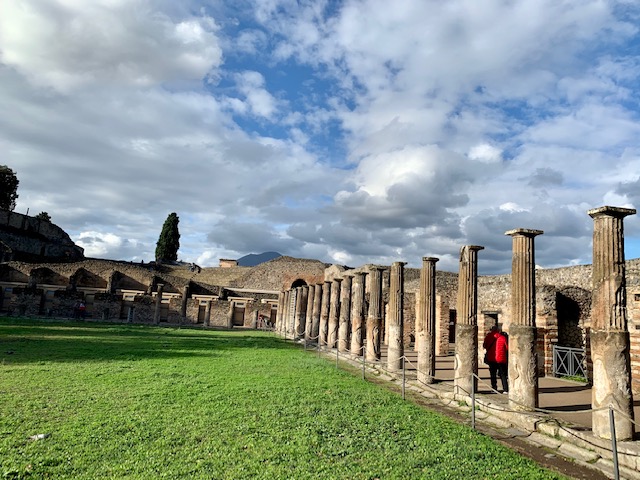
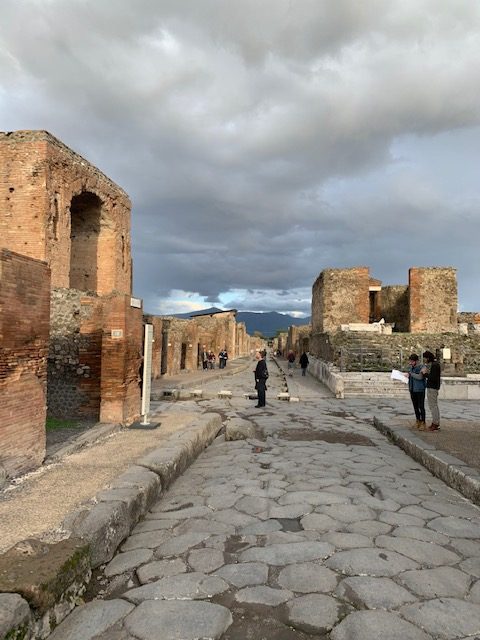







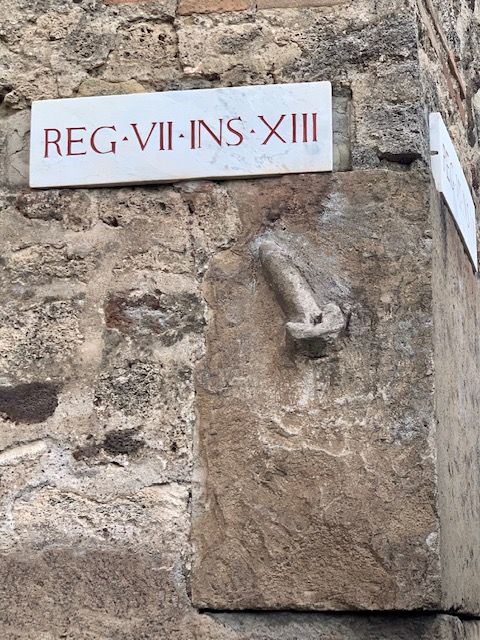

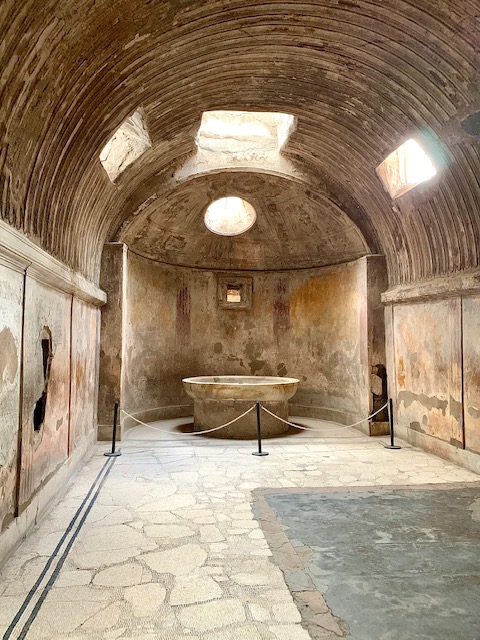












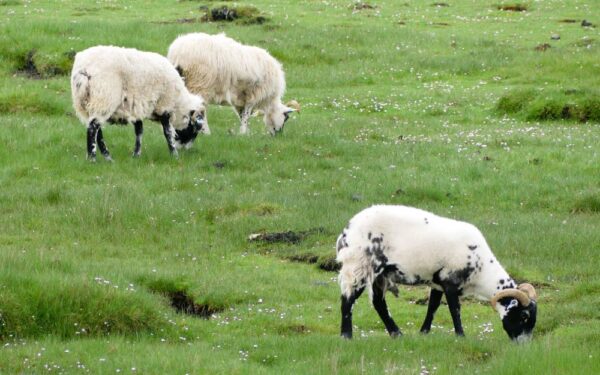
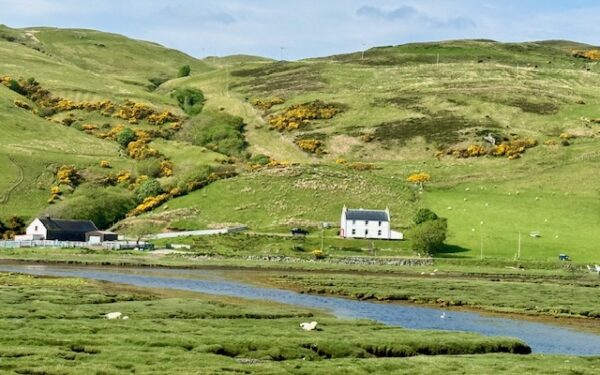
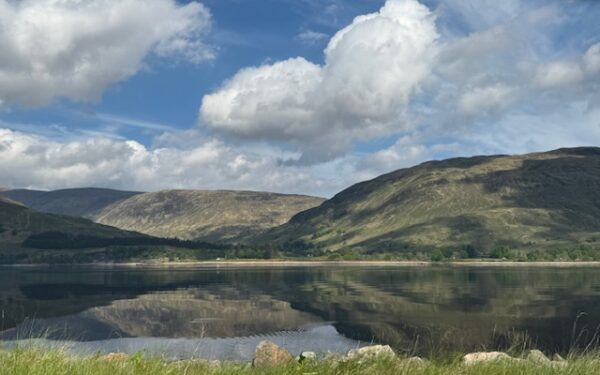
Hi. I wondered where you two were. When are you coming back? Your housekeeper can’t get into your house because the gardener slid the inside bolt on the door. I’ll try to catch the gardener to tell him not to do so this time, but don’t remember when he comes and don’t know if your housekeeper will be back before you get back. We need to keep each other better informed. Love your photos of Pompeii. Did you know I was just there? Some of your photos look exactly like mine..Have fun on your gadding.
Ah, Naples, Vesuvius, Pompeii! So wonderful to visit! I noticed that the food wasn’t too shabby either! Glad you continue to have nice weather.
I love your informative and clever writing style and love knowing that you are both so happy!!!
I devour each episode of your travel diaries just as you have each of the dishes so eloquently described . Although I have visited most of those cities and areas you vividly paint, your impression, thoughts and history make me feel like I am reliving my past exploits. Thank you for all your posts and may each new day bring you more treasures.